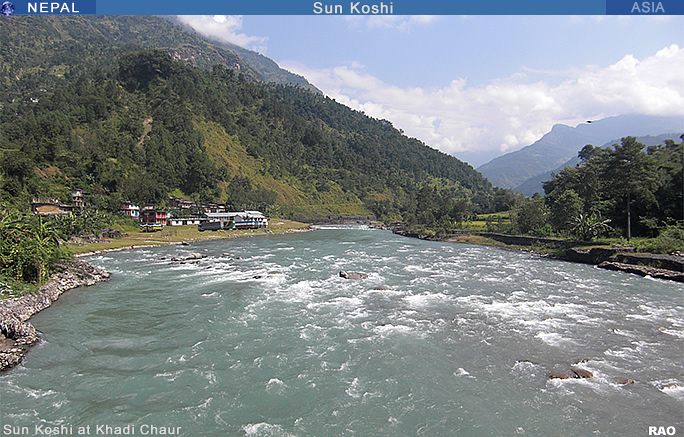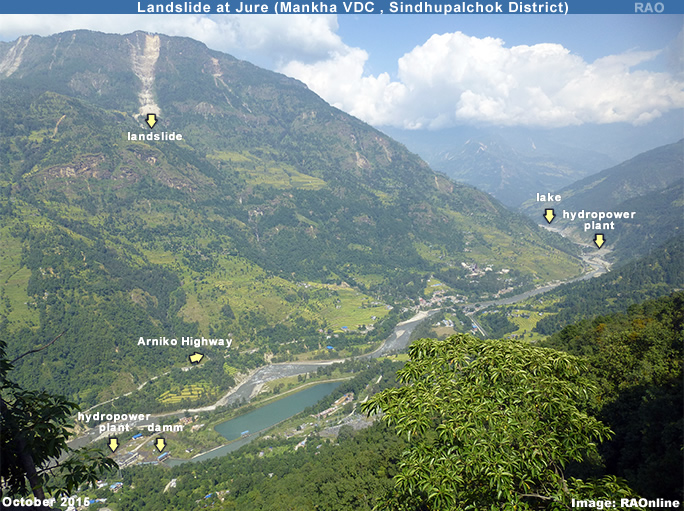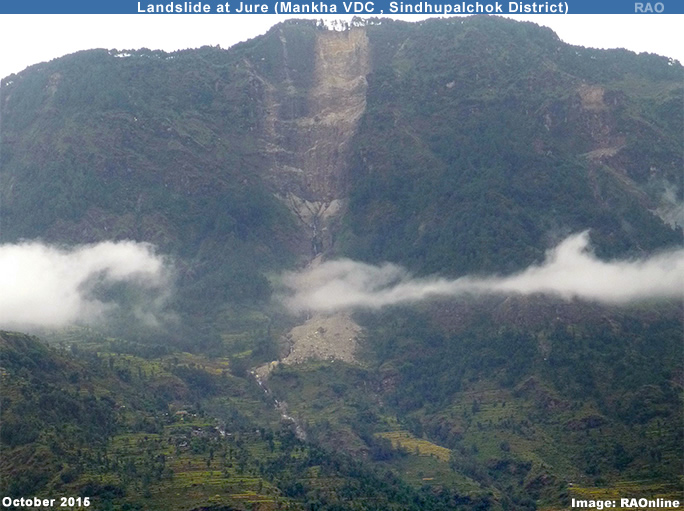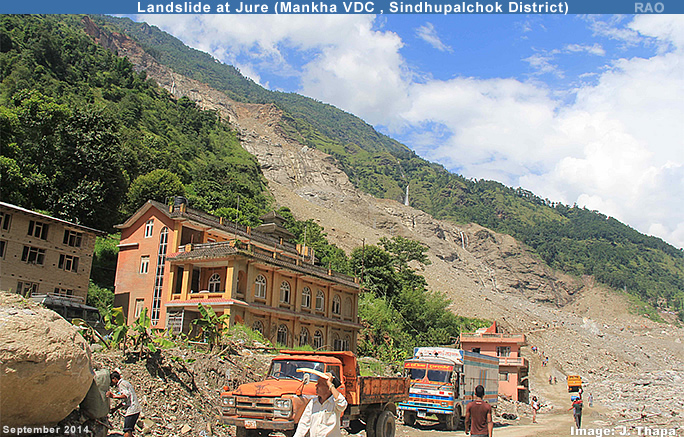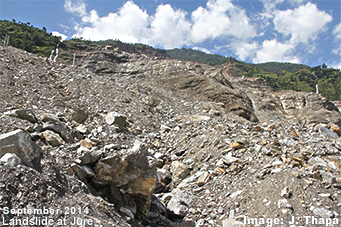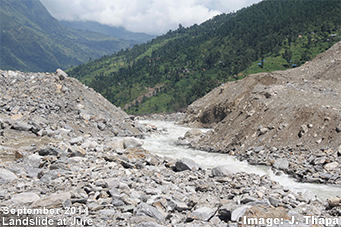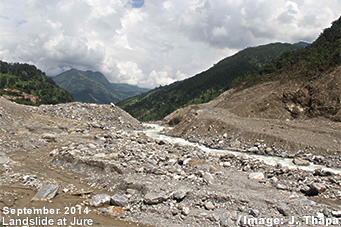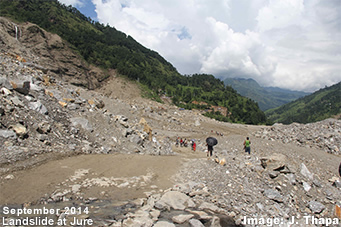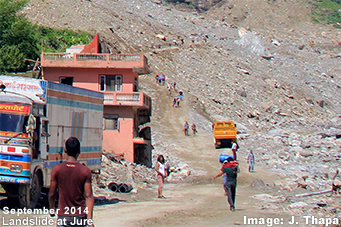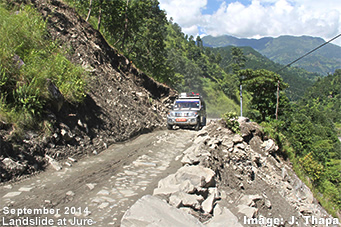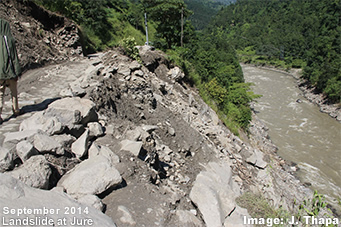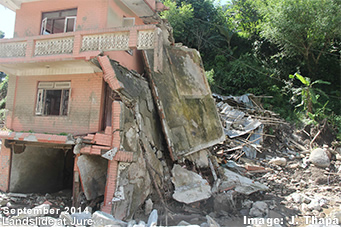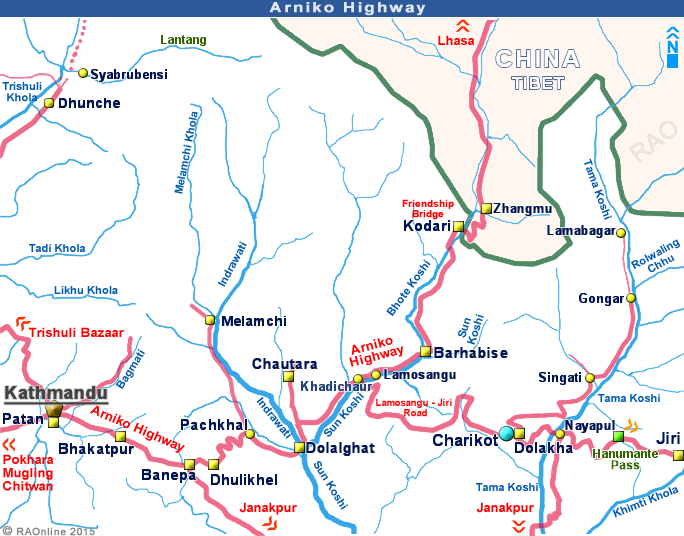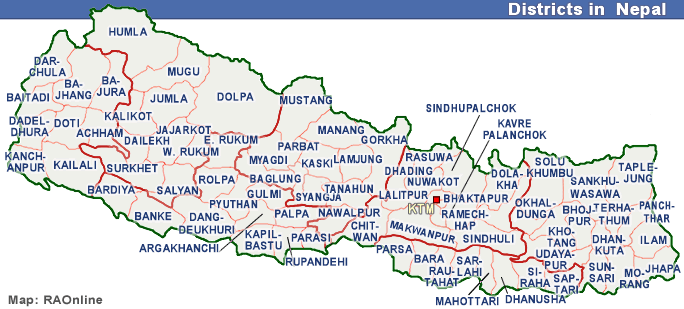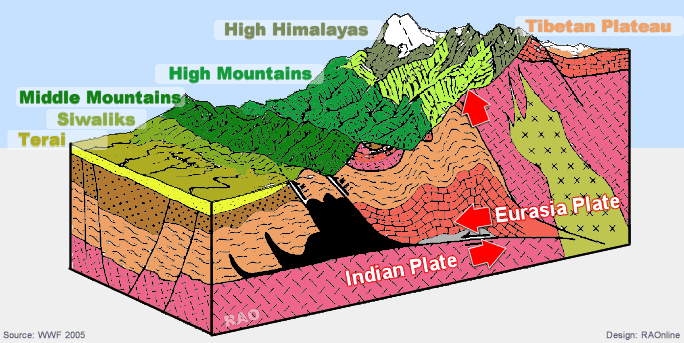 |
Nepal Climate |
 |
Nepal Information |
|
|
 |
| Climate: Natural Hazards in Nepal |
| Monsoon season 2014 |
 |
| Landslide at Jure (Sindhupalchowk district) |
4 August 2014
At least eighteen persons have been killed, 17 injured and more than 155 are stil lmissing after a massive landslide blocked Sunkoshi River at Jure, Mankha Village Development Committee in Sindhupalchowk district 120 Kilometers east of Kathmandu.
The death toll is expected to rise as many are feared to have gone missing in the landslide. The landslide that occurred at around 2 inthe morning of 1 August 2014, stopped the water flow and formed a large pool in the area. Local residents of Lamosangu, Balefi, Sukute, Khadi chour and Barhabise of Sindhupalchowk have already been evacuated to safer places.
The Ministry of Home Affairs (MOHA) has declared an emergency on both sides of a 200 meter length (upstream - downstream) of the river and directed concerned authorities to open all 56 gates of the Koshi River Dam as a preparedness measure in case the landslide-blocked lake bursts.
The government has deployed a rescue team comprising over 500-700 security personnel and district teams for search and rescue, evacuation and early warning dissemination in the incident area and has already informed authorities in China and India and requested their technical assistance to deal with the developing situation.
21 August 2014
According to the Ministry of Home Affairs, the torrential rains of 14-15 August 2014 caused a series of massive floods in 17 districts of the mid and far Western region of Nepal, taking at least 89 lives and injuring 39 people. 128 people are reported to be missing. 428 houses have been completely damaged, while more than 5000 houses remain inundated leaving thousands of families displaced. These figures are expected to increase as data are still being gathered from the affected districts.
Many bridges and culverts of the national highway and its feeder roads have been broken and some sections of these roads have been washed away. Local residents of village development committees and municipal areas of Udayapur, Saptari, Siraha, Rautahat, Makawanpur, Chitwan, Dang, Banke, Bardiya, Surkhet, Kailali and Kanchanpur districts have been evacuated to safer places.
According to the Meteorological Forecasting Division and Flood Forecasting Project, rainfall at the upstream of Karnali, Babai, West Rapti and Narayani river systems is above the warning level, and above flood levels in Karnali at Chisapani, West Rapti at Kusam, and Narayani at Narayanghat. If this situation remains the same or is further aggravated, the flood and landslide conditions may worsen.
7 August 2014
A landslide in Nepal on 2 August killed more than 150 and search and rescue has ended. Experts say this event, one of the deadliest in the country's recent history, is a wake-up call for hazard mapping, early warning, and disaster management.
During the early morning of 2 August, a 1.9 km long slope of land perched 1,350 metres above the Sun Koshi river collapsed, according to an evaluation report by the Kathmandu-based International Centre for Integrated Mountain Development (ICIMOD).
According to NRCS, the disaster caused one of the highest death tolls due to a landslide in a single village in Nepal's history since records began in the 1950s. In the past decade landslides killed over 1,300 people and destroyed 10,000 houses, according to NRCS. An estimated 50 children were killed in the landslide, according to the ministry of women, children and social welfare.
27 August 2014
A massive landslides in Jure, Mankha village of Sindhupalchowk district that killed 33 people and 153 people are missing.
14-16 August: NRCS trained volunteers deployed to conduct rapid assessments and are providing relief services to the affected people. Preparedness stocks have been dispatched to the affected districts and distributions are ongoing where movement is possible.
17 August: Information bulletin published on the situation.
18-21 August: 19 districts affected with damages to major infrastructures (i.e. schools, health facilities, bridges, culverts, local markets, transport vehicles), and livestock, crops and daily consumables.
21 August: IFRC DREF launched for CHF 249,709. 25 August: 2 more districts affected.
25 August: 2 more districts affected.
8 September 2014
The monsoon season of 2014 in Nepal has been severe compared to previous years. After an initial normal start to the season, early August saw massive landslides from a hillside in Jure, Mankhaa village of Sindhupalchowk district due to heavy rains.
The landslide killed 106 people with 155 people still missing and declared dead by the government of Nepal. In addition to the normal, ongoing monsoon rains, heavy rains between August 14 and 16 caused massive flooding and several landslides in 21 districts throughout the country. The vast majority of those affected are in six districts in the mid-west.
At the peak of the floods, approx. 225,000 people were affected. As the waters receded, the number decreased to around 125,000 people, the majority of them with their houses destroyed (8,000) or damaged (approx. 20,000).
While Nepal regularly experiences localized flooding during the monsoon season, this situation is the worst experienced since the Koshi river floods in 2008, which at the time only affected a limited number of districts compared to 21 now.
top
| Topography:
Cross-section of Nepal |
 |
| more
information |
 |
| Links |
 |
 |
 |
External
link |
| 
